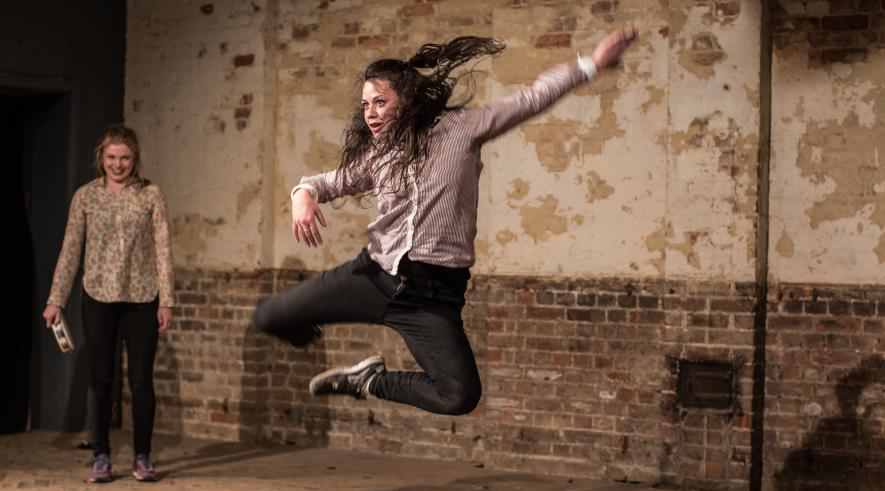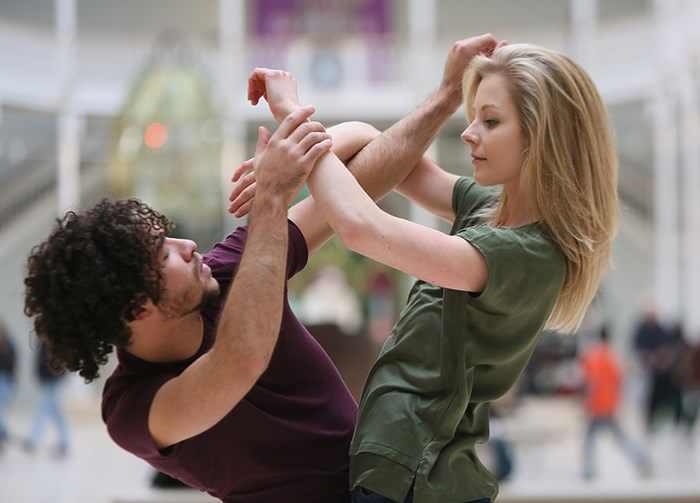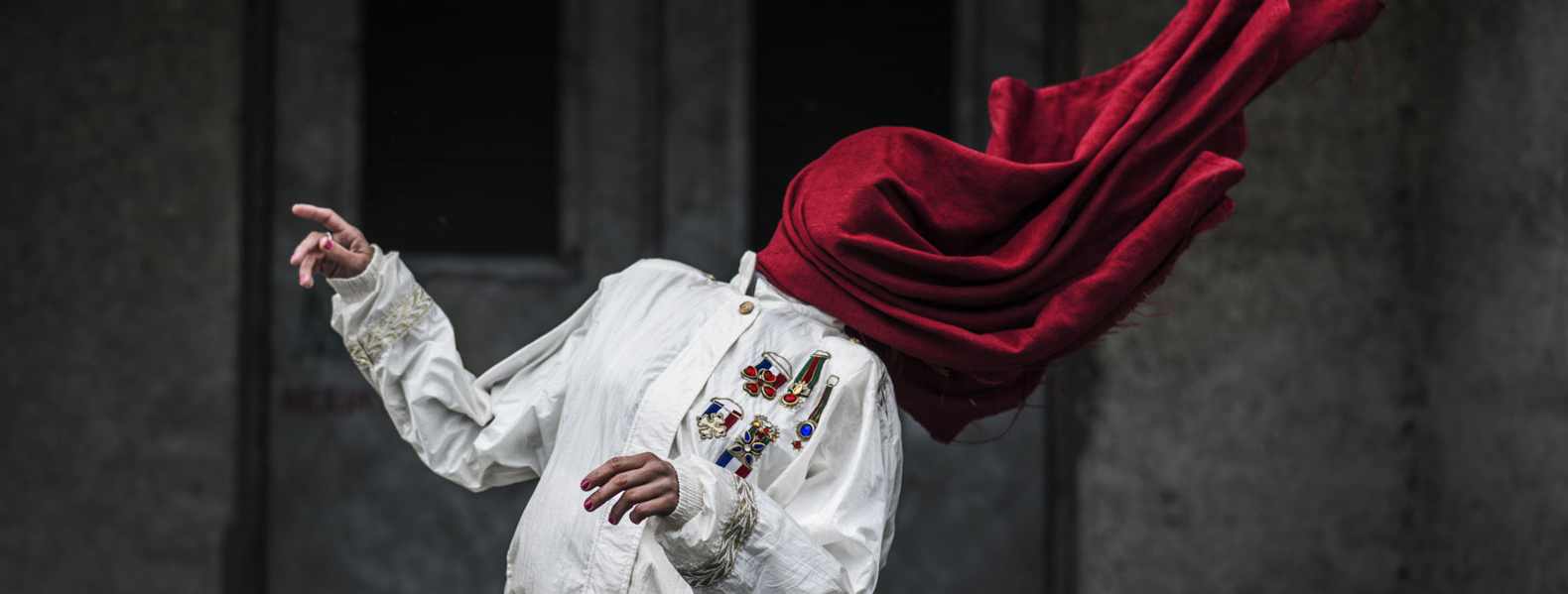Friday evening at Dance Base, and a jolly audience laugh out loud as performers Chess Dillon-Reams and Cristina MacKerron, reveal their innermost thoughts and conversations, drawing us into their friendship through a mixture of charisma and sheer will. The cyclical narrative of May-We-Go-Round? gives the audience an insight into their dating sagas complete with emotional torment and the subsequent response of the supportive friend. Both women shift between caring and offloading, taking centre-stage and forming a one-(wo)man chorus by mirroring or clapping a tambourine behind, in a shared relationship of mutual respect and understanding.
There is a growing trend towards celebrating womanhood, and a female friendship taking centrestage over the traditional love story does just that. Here this dynamic pair explore growth, identity and life’s knockbacks with tenderness and outright silliness. They use a vocabulary of hip hop and contemporary dance, laced with an over-emphasised mimicking and mocking style which illustrates narratives and emotions with humour. Fast footwork, ridiculous pelvic thrusts, quirky gestures and expansive leaps and falls, top rocking and cheesy jazz inform the rich dancing that takes the audience through these girls’ trials and tribulations.
Fast transitions between gendered behaviours see the energy suddenly hiked up towards exhaustive climaxes. Chess and Cristina (as they refer to themselves throughout), repeat flirty poses, pointing their legs and toes whilst repeating elongated ‘ooooohs’. Speech and movement distort and grow into an embodiment of an angry, sexually motivated, ‘geezer’. Fast moving, talking and grunting, these women can be ‘male’ if they so desire; worship the men they put on pedestals, or expose male behaviours at their crudest and rudest.
From a beat-boxed heartbeat to flirty peacocking and bold camaradery, the physical embodiment of signs, gesture, and grounded movement mock and mimic the subject. There is a hoody pas de deux, a bra-swinging port de bras, and even time to share a vodka and cranberry with an already half-baked audience!
The skipping phrase enforced on them to break up each story perfectly demonstrates the boredom of life’s disappointments, and the tedium of having it thrust upon you again and again. The structure of the work broken up by these plodding pathways balances the reliving of experiences with outrageous passion and energy, giving all time to recover.
Men in the audience laugh from their very core, but the joke is on them. They will never experience something as strong and dynamic as this female friendship which portrays women as kind, compassionate, strong and expressive of emotion with the ability to understand and deal with it. It also allows them to take on male characteristics whilst happily donning heels and getting dressed together to hit the town a minute later. Women can and are all these things and the male love interests are a mere sideshow to what is really at play here.
The sections that frame and draw a raucous piece into our hearts and minds are where one narrates the rise and fall of the other’s relationship. Whether it be with Matt with the blonde spiky hair, or the fit PE Teacher, each epic narrative is reduced to few statements whilst the girl dresses with an extra item of clothing, a tiny bit more with each spoken phrase. We see her pause and begin to undress as the narrative takes a turn in a shifting in and out of love and in and out of identities. In a story that every women can relate to, this chapter for the girls is bought to a close by the donning of all the items from every boy and every relationship at the same time. They cover, smother, protect and embellish a multi-layered identity that is stripped bare ready for the next chapter of adventures.
May-We-Go-Round is one for everywoman, full of tears and laughter.





